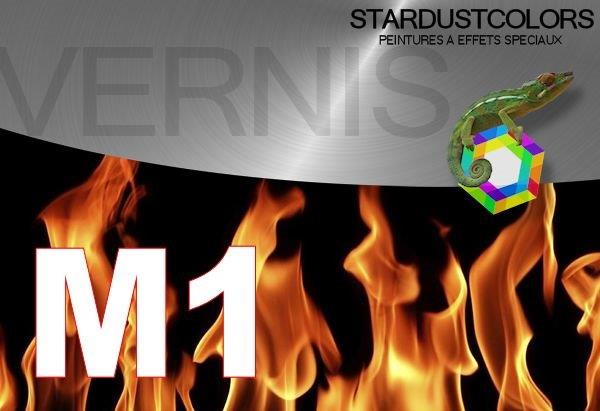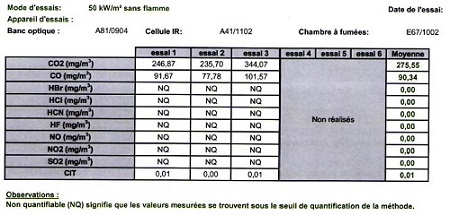 Varnishes against fire
Varnishes against fire
Fire-resistant varnishes are the best known among standard varnishes. A fire-retardant varnish limits the spread of fire in the fields of construction or transport, which meet strict standards. The intumescent varnish is supposed to be resistant to ignition and allow the public to evacuate to the emergency exits while limiting the level of danger.
The intumescent varnish must not emit significant and toxic fumes. It must not be easily flammable by feeding and accelerating the fire. The NF EN 45545-2 standard, for railway applications, regulates the levels of protection against fires in trains and in particular the requirements for the fire behavior of materials, paints and varnishes. In particular, the presence and quantity of toxic gases released during combustion are determined.
Fire-retardant varnish : test method and tests
Today, the ISO 5658-2 test standard governs the fire reaction tests of materials. This standard applies to all intumescent varnishes in building and transport with regard to the spread of fire. With laboratory tests, carried out on samples of fire-retardant varnishes applied to specific materials, in which a fire is simulated using lasers or flameless infrared thermal devices intended to heat and ignite the surface. The propagation of the flames (in mm/second) and the propensity of the fire-retardant varnish to ignite and to feed the flame are measured. The results of the tests carried out on a sample by a laboratory are given with the following measurement: critical flux at extinction - CFE (kW/m²)
For a fire-retardant varnish, samples are subjected to a fire simulation and the following are measured : the ignition time in seconds and the heat output the extinction time in seconds and the distance traveled the quantity of heat released (THR MJ/m²) the total quantity of fumes given off NF EN ISO 5659-2 which determines the optical density of the combustion fumes the toxicity of the fumes given off with the analysis of the elements (CO2, CO, and other components)
 Intumescent varnishes m1 and m0
Intumescent varnishes m1 and m0
These coatings are often confused. Often, we still talk about the old fire classification standards NF P92-507 M0 and M1 to qualify fireproof varnishes for the building sector (M1 corresponding to a resistance lower than M0, with 30 minutes of resistance against 60 minutes for the M0 level). The most common mistake is to separate the varnish from its application system (substrate material / type of primer)
The validity of a fire-resistant varnish system
A fire-resistant varnish is validated by a test report under certain conditions : For example, the varnish is classified M1, after having been tested on an X primer and a metal base. If the same varnish is applied to a wooden surface, the report is no longer valid. The results of the tests relate only to the behavior of the product under the particular conditions of this test. They are not intended to be the sole criteria for evaluating the potential fire hazard of the product used.



















































































